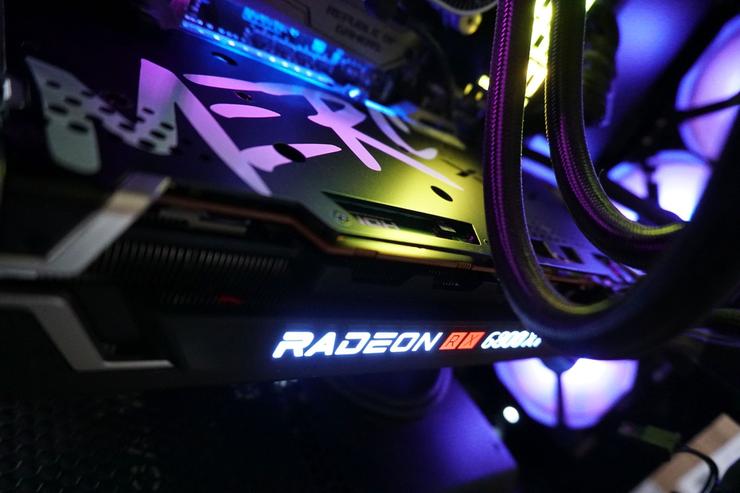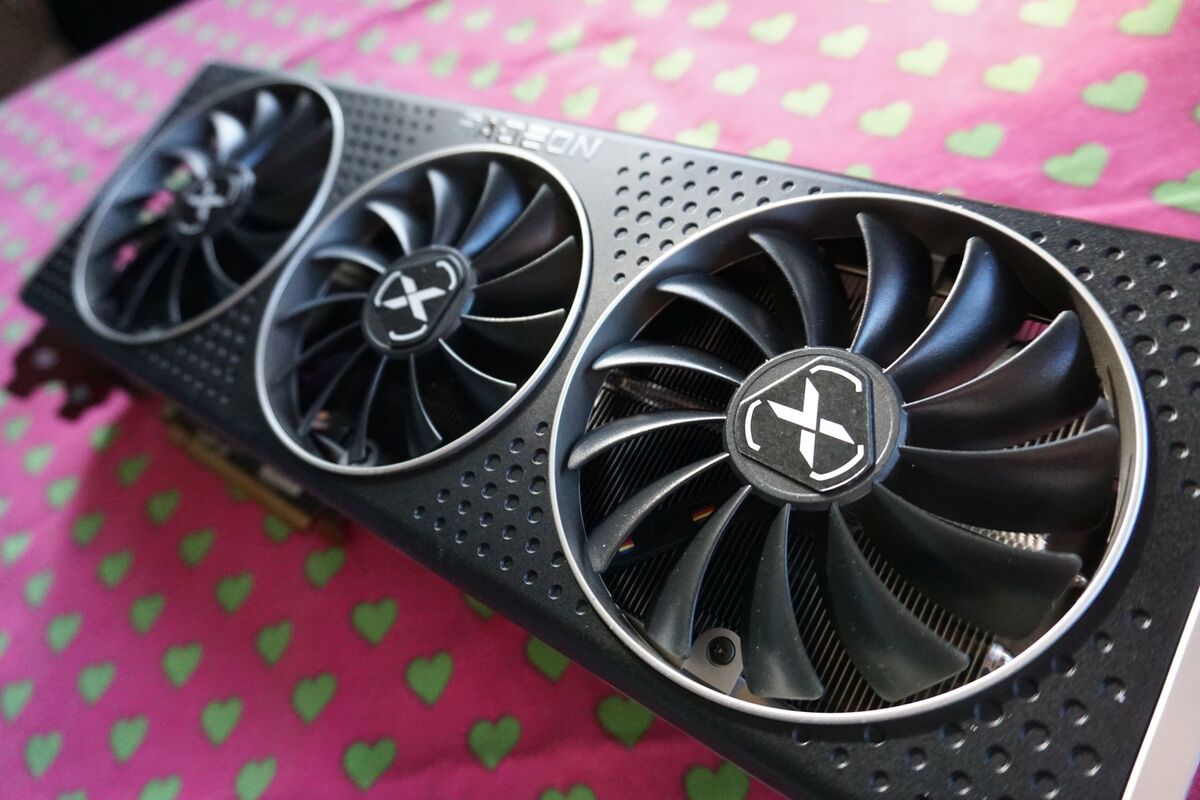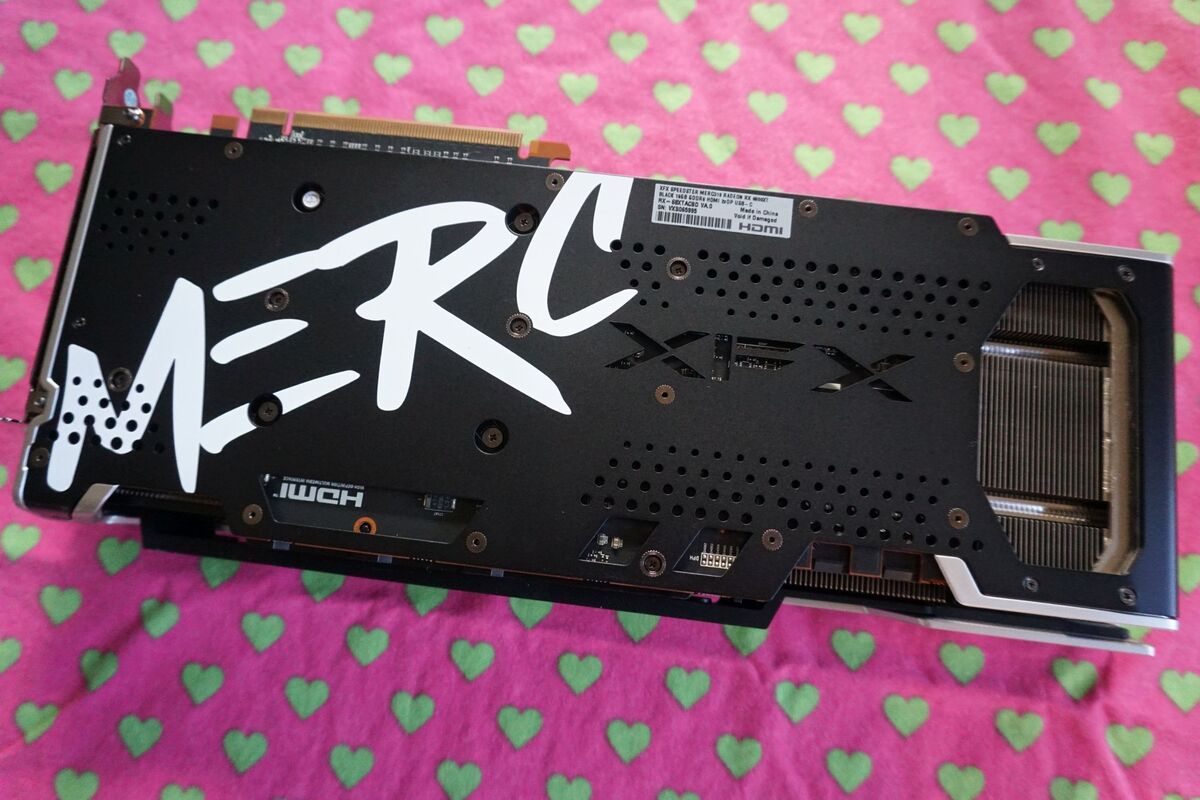 Credit: Brad Chacos/IDG
Credit: Brad Chacos/IDG
Should you buy the XFX Radeon RX 6800 XT Merc 319?
If you’re looking for an ultra-powerful graphics card that can chew through any game in pure silence, the XFX Radeon RX 6800 XT Merc 319 is worth considering. It’s a fantastic option for 4K, 3440x1440 ultrawide, and high refresh-rate 1440p gaming, backed by a future-proof 16GB of onboard memory. The Merc 319 bests all rivals for 1080p 144Hz gaming as well, but at that resolution (or 1440p 60Hz) you’d be better off getting a cheaper graphics card.
 Brad Chacos/IDG
Brad Chacos/IDGYou might want a cheaper Radeon RX 6800 XT option, too. XFX charges $800 for the factory-overclocked Speedster Merc 319. That’s a staggering $150 over the base $650 price for the Radeon RX 6800 XT, negating AMD’s pricing advantage versus rival RTX 3080 graphics cards. Your money only buys you a few extra frames of performance out of the box, but you’re really paying for the cooler. This gargantuan triple-slot card remains utterly silent in its stock configuration and stays remarkably quiet even if you flip over to the higher-performance “Rage” secondary BIOS. Its hotspot temperatures remain a full 10 degrees chillier than the reference RX 6800 XT design, too, and XFX offers a three-year warranty with the Merc 319.
Between the dual BIOS switch and the fantastic custom cooler, the XFX Merc 319 should satisfy overclockers looking to push their hardware to the bleeding edge of performance. Simply switching to the Rage BIOS’s higher power and fan limits and running the conservative auto-overclocking tool in AMD’s Radeon Software had this graphics card running at a blistering 2,509MHz in under three minutes with no real effort required whatsoever. If you flip to XFX’s Rage BIOS and enable AMD’s “Rage mode” tuning preset in Radeon Software, you can increase the card’s power limit by a considerable 25 watts to crank performance higher without voiding your warranty. And if you do decide to try your hand at a manual overclock, having a backup BIOS in case things go wrong is always a welcome fallback.
The XFX Merc 319 is one of the largest graphics cards we’ve ever tested. Most enthusiast-class graphics cards are long and thick these days, but this is longer and thicker than most. The new design looks attractive as well, though the large, stylized “Merc” logo splayed across the backplate won’t suit everyone’s tastes.
 Brad Chacos/IDG
Brad Chacos/IDG
The XFX Merc 319 in our test system.
Stepping back a bit further, AMD’s Radeon RX 6800 XT offers significantly more memory capacity (16GB vs. 10GB) than Nvidia’s rival GeForce RTX 3080, and a Smart Access Memory feature that lets the card get even faster when paired with an AMD Ryzen 5000 processor. The GeForce GPU offers significantly faster ray tracing performance, supercharged by Nvidia’s performance-boosting DLSS feature, and AMD has no answer for that yet. DLSS lets you play ray-traced games at 4K resolution, while Radeon RX 6800-series cards top out at 1440p with the cutting-edge lighting technology enabled. Nvidia also offers superior encoding and content creation software ecosystems that people who work and play may find invaluable.
The features that matter more to you should guide your buying decision, as the RX 6800 XT and RTX 3080 trade performance blows in standard games. The conclusion of our Radeon RX 6800-series review dives deeper into the RX versus RTX comparison.
AMD’s reference Radeon RX 6800 XT starts off at $50 less than Nvidia’s reference 3080, but by charging a massive $150 premium, the enthusiast-level XFX Merc 319 winds up competing with best-in-class GeForce RTX 3080 offerings like the outstanding EVGA RTX 3080 FTW3 Ultra. At $810, EVGA’s card costs $110 more than Nvidia’s GeForce RTX 3080 MSRP and just $10 more than XFX’s Merc 319. They’re both great high-end graphics cards with similar performance, utterly silent cooling, and dual BIOS switches, but the FTW3 runs a few degrees cooler and offers extra niceties such as customizable RGB lighting, fan speed and RGB headers, a bundled GPU support bracket, and EVGA’s superb Precision X control software. All those extra features make it feel like you get a bit more for your money with the FTW3.
 Brad Chacos/IDG
Brad Chacos/IDGIf XFX had stuck to a $100 or so premium, it would be competing against solid, but not fully loaded GeForce options like the $760 MSI RTX 3080 Gaming X Trio in price, which would make it even more compelling. MSI’s card also offers a fantastic cooler (and abundant RGB lighting) but lacks the crucial-to-overclocking dual BIOS switch found on XFX’s card.
If you don’t care about overclocking and are fine with good, but not utterly silent noise levels, the $650 Radeon RX 6800 XT reference design offers virtually the same out-of-the-box performance and core AMD features as the Merc 319 for significantly less money. XFX is hoping to offer custom Radeon RX 6800 XT options starting at $700 before the end of the year, but with more conservative cooling and power designs, and possibly different display outputs.
Bottom line? XFX knocked it out of the park with the Radeon RX 6800 XT Speedster Merc 319’s performance and cooling, but this card is priced like the no-compromises flagship it is. The Merc 319 is blazing-fast, whisper-quiet, and good-looking (if you aren’t bothered by the backplate logo). Just make sure you have room in your case before you buy it.
If XFX maintained AMD’s Radeon pricing advantage versus its GeForce RTX 3080 rivals and charged $50 less, the Merc 319 would be facing easier competition and easily earn our Editors’ Choice award. At $800, however, it’s worth weighing all your available options. I can get why XFX wants to charge the same for its incredible custom kit as Nvidia partners do for their flagship entries, since the RX 6800 XT and RTX 3080 trade performance blows and compete with rival features. We haven’t seen an enthusiast-class Radeon graphics card kick this much ass in a long time. But the steep $150 premium over MSRP keeps the card from being an absolute slam-dunk must-buy for Radeon enthusiasts.

















